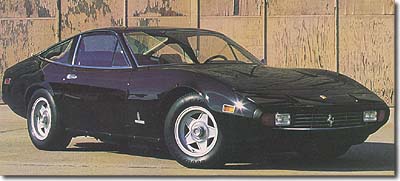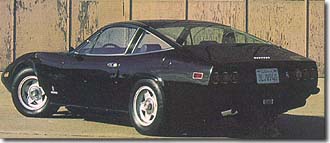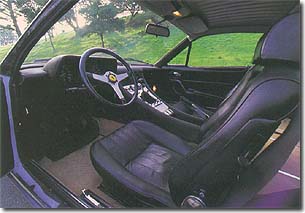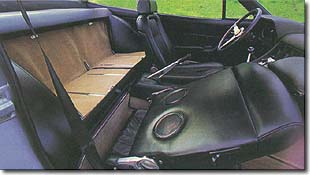


Ferrari 365 GTC/4 The Unheralded CONTENDER
Winston Goodfellow examines the Ferrari he calls The 456 of the Early Seventies. The styling is so elegantly low-key that the model is often overlooked.
History
The C/4's elegant lines were drawn at Carrozzeria Pininfarina in the first half
of 1970. By September, a prototype was ripping up and down the hills around Modena. Almost identical to its production brethren, its slightly smaller rear bumper and front grille sans square fog lights and centrally mounted cavallino rampante were the only external differences.
 Ferrari's newest was also featured in Road & Track's Geneva report. "(The 365 GTC/4) has a clean almost stark look ending in a window line with bold upward curve," Cyril Posthumus wrote. "Frontal treatment is novel, the grille surround being molded in matte black polyurethane foam and also acting as a bumper. The engine...has already been fully de-toxed... and looks a lot tidier than Jaguar's V-12 with similar treatment...."
Ferrari's newest was also featured in Road & Track's Geneva report. "(The 365 GTC/4) has a clean almost stark look ending in a window line with bold upward curve," Cyril Posthumus wrote. "Frontal treatment is novel, the grille surround being molded in matte black polyurethane foam and also acting as a bumper. The engine...has already been fully de-toxed... and looks a lot tidier than Jaguar's V-12 with similar treatment...."
 On the Road
On the Road
Whenever a discussion turns towards the "best all around Ferrari" title, the C/4's exclusion only reflects that not many have sampled one. Yes, the 330 GTC has that classic Sixties look, but it doesn't have the C/4's two small seats that fold down into a rear package tray; surprisingly, neither does today's title contender, the 456.
What to Look For
In spite of its refinement and luxurious attributes, the market is not beating a path to the C/4's door. "I think they are one of the most underrated of all Ferraris," says Cammisa Motor Cars' Brandon Lawrence. "They cost $3,000 more than a Daytona when new, and there were fewer built. And it has the best sound there is."
 How Much to Pay
How Much to Pay
Given this Ferrari's vintage, many C/4s have low mileage. Our experts feel this stems from two reasons- owners loved them and kept them, or they sat when something went wrong.
Summary
Like the 456 today, the 365 GTC/4 offered comparable understated looks, high levels of refinement, civility, and creature comfort but with slightly less comparative performance. Still, the division among our experts demonstrates that it does not have the universal appeal of the Daytona, the Ferrari to which it is linked.
That continual comparison, along with the engine's exorbitant service and repair costs, are indeed the C/4's largest drawbacks. While it in many ways is the better car,
Want more information? Search the web!
Search The Auto Channel!